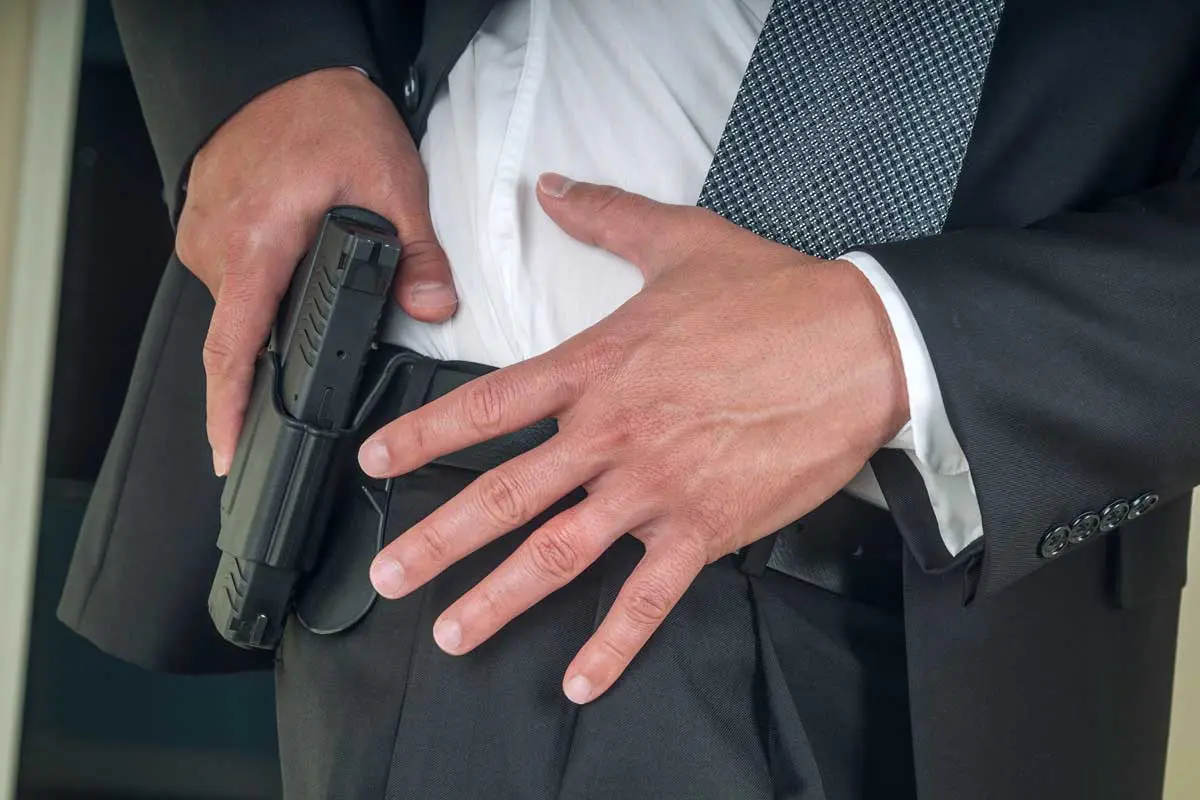Top 5 Mistakes to Avoid When Carrying a Concealed Weapon

1. Improper Holster Selection
One of the most critical factors in carrying a concealed weapon is selecting the right holster. Many people make the mistake of choosing a holster based on aesthetics or convenience rather than functionality. A good holster should provide proper retention, allowing you to carry the weapon securely without worrying about it falling out. Additionally, it should facilitate a quick and smooth draw, ensuring that you can access your weapon when needed.
Holsters come in a variety of styles, including inside-the-waistband (IWB), outside-the-waistband (OWB), and pocket holsters. Each offers different levels of concealment and comfort. When choosing a holster, prioritize factors like comfort, accessibility, and safety. It’s also crucial to match the holster to your specific firearm, as a poorly-fitted holster can lead to discomfort, slower draw times, or even negligent discharges.
2. Neglecting Firearm Training
Another common mistake among concealed weapon carriers is failing to prioritize ongoing firearm training. Simply owning a firearm and carrying it doesn’t make you proficient in its use. Handling a concealed weapon safely requires regular practice. Many carriers become complacent after completing their initial training, forgetting that skills can diminish over time.
Regular practice helps reinforce your muscle memory, allowing you to draw and fire your weapon accurately under stress. Visiting a shooting range and participating in defensive shooting courses are excellent ways to maintain your skills. In addition to practicing marksmanship, it’s essential to train for real-world scenarios, such as drawing from concealment, shooting under duress, and making quick decisions. Consistent training will not only improve your proficiency but also boost your confidence in handling your concealed weapon responsibly.
3. Improper Clothing Choices
The way you dress significantly impacts how well you can conceal your weapon. Wearing tight or ill-fitted clothing can easily reveal the outline of your firearm, a phenomenon known as “printing.” Printing compromises your concealment and may draw unwanted attention to the fact that you are armed.
To avoid printing, choose clothing that accommodates your carry style. Looser-fitting shirts, jackets, or pants are better suited for concealing a weapon. It’s also important to consider the location of your holster. For example, appendix carry and hip carry both have different concealment requirements. When debating between appendix vs hip carry, it’s essential to consider your body type and daily activities. The appendix carry allows for quicker access, but it may be less comfortable for some, especially when sitting. On the other hand, hip carry tends to be more comfortable for prolonged wear but may be slower to draw from in certain positions. Select clothing that provides both comfort and proper concealment for your chosen carry method.
4. Failing to Understand Legal Implications
Understanding the laws surrounding concealed weapon carry is essential to avoid legal trouble. Each state has its own regulations regarding where you can and cannot carry, and failing to familiarize yourself with these rules can lead to serious consequences. Many carriers make the mistake of assuming that a permit allows them to carry anywhere, which is far from the case.
Certain locations, such as schools, government buildings, and private properties with posted “no firearms” signs, may be off-limits even if you have a concealed carry permit. Ignorance of these laws can result in criminal charges, hefty fines, or loss of your permit. Additionally, it’s important to understand the legal framework surrounding self-defense. While defending yourself may be justified in certain situations, the use of lethal force is subject to scrutiny, and you must be able to prove that your actions were reasonable and necessary.
To avoid legal issues, stay updated on local and state laws regarding concealed carry and ensure you understand the legal definitions of self-defense. Carrying a concealed weapon comes with immense responsibility, and knowing the law is a critical part of that responsibility.
5. Inconsistent Carrying Habits
One of the most dangerous mistakes concealed weapon carriers make is inconsistent carrying habits. Many individuals believe they can pick and choose when to carry their firearm based on perceived threats or specific situations. However, the reality is that self-defense situations are often unpredictable. Carrying inconsistently increases the likelihood that you will not have your firearm when you need it most.
It’s essential to make carrying your weapon part of your daily routine. Whether you’re going to the grocery store, running errands, or attending a social event, you should be prepared to carry your firearm responsibly. A significant part of concealed carry is being mentally and physically prepared at all times. Make sure to practice drawing and reholstering from your chosen carry position so that you can react quickly if the need arises.
Additionally, consistently carrying your firearm in the same position (e.g., appendix carry or hip carry) builds muscle memory, making your draw faster and more reliable. Switching carry positions too frequently can confuse your muscle memory and slow down your reaction time in a high-stress situation.
Conclusion
Carrying a concealed weapon requires more than just owning a firearm and holster. It involves a commitment to safety, training, and responsible decision-making. By avoiding these common mistakes—such as choosing the wrong holster, neglecting training, making poor clothing choices, overlooking legal regulations, and carrying inconsistently—you can ensure that you are prepared to carry a concealed weapon effectively and responsibly.
Remember, the ultimate goal of carrying a concealed weapon is to protect yourself and others while maintaining a high level of safety and discretion. Practice regularly, stay informed about the laws, and make carrying a concealed weapon a seamless part of your daily life to be ready when it matters most.






